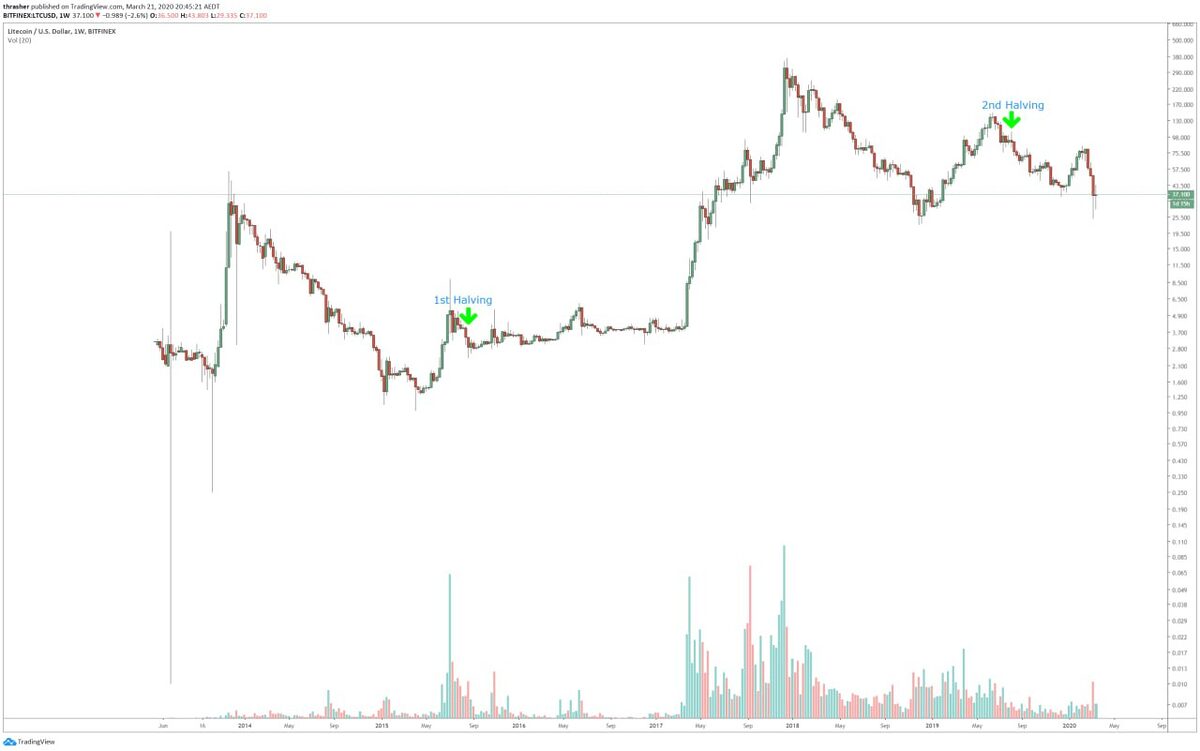
- Litecoin’s halving is set for August 26.
- In anticipation, wallet addresses and active users are skyrocketing.
- Historically, price action has always followed halvings – but predicting when is tricky.
Halving events in cryptocurrency always garner a lot of attention with their rarity and impact to supply and demand. One of the older coins will have its fourth-ever halving in the coming weeks.
Litecoin wallets have surged ahead of the expected Litecoin halving event on August 23 as many investors eye a traditional price rally. Daily active addresses saw a 28% 7-day increase and new addresses saw a 54.6% 7-day increase,
Why Is the Halving Important?
Litecoin miners receive LTC as a reward when they successfully generate a new block containing transactions. When Litecoin was launched, miners earned 50 LTC for each produced block.
Sponsored
Following the mining of every 840,000 blocks, the block reward is halved. Litecoin has experienced two previous halvings in its history, occurring in August 2015 and August 2019. The reward stands at 12.5 LTC and is set to decrease to 6.25 LTC during the third Litecoin halving.
As time progresses, the block reward will eventually diminish to 0 by the year 2142. At that point, miners are anticipated to be motivated by transaction fees as an incentive for maintaining the network.
Similar to Bitcoin, Litecoin also follows a halving cycle. However, the block creation time of 10 minutes in Litecoin results in slower reductions, with the BTC block reward decreasing after every 210,000 blocks.
How Halvings Can Impact Price
Litecoin, along with another major coin – Bitcoin – always has price action conversations attached to the halvings that have come before. Patterns seem to point to price rises following a halving, but the timing of the rises is difficult to predict.
Sponsored
Historical data reveals that previous Litecoin halvings did not immediately result in significant price surges for LTC. After the 2015 halving event, the price of Litecoin remained relatively steady until the middle of 2017, when Bitcoin embarked on a remarkable bull run that dominated the markets during that time.
Similarly, the second halving also led to a period of price stability before the broader cryptocurrency markets experienced a bull market in 2021.

Rising Demand for Falling Supply
The halving alone does not have the potential to impact the price of Litecoin. However, its impact on supply and demand can certainly be a factor as less supply is created after mining new Litecoin blocks.
Additionally, the metrics around active users and new wallet addresses indicate a massive surge in demand which can help increase the impact of lower supply and higher demand.
On the Flipside
- The launch of the LTC-20 standard in May, similar to BRC-20 ordinals, has also helped bolster the activity and wallet addresses in the past.
Why this Matters
Halving events are essential for the tokenomics of many different coins, but for users, they also represent drastic changes in supply and demand, which are worth considering.
Read more about the introduction of LTC-20:
Litecoin Activity Bursts 832,000 on the Cusp of Historic Halving
Read more about a new era of Bitcoin ETFs:
Are BlackRock and Fidelity Looking to Own U.S. Crypto Through Bitcoin ETF Offerings?
